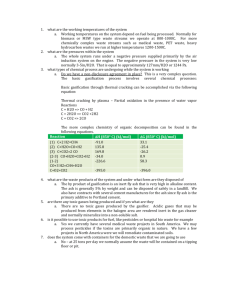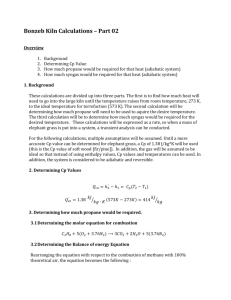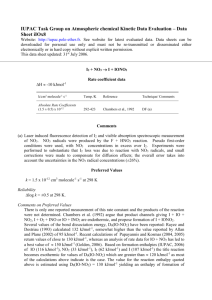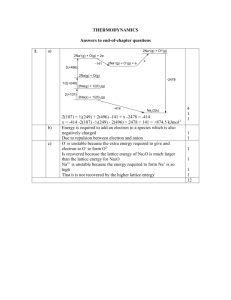5.1 Exercise 4 - Entropy and Free Energy - A
advertisement
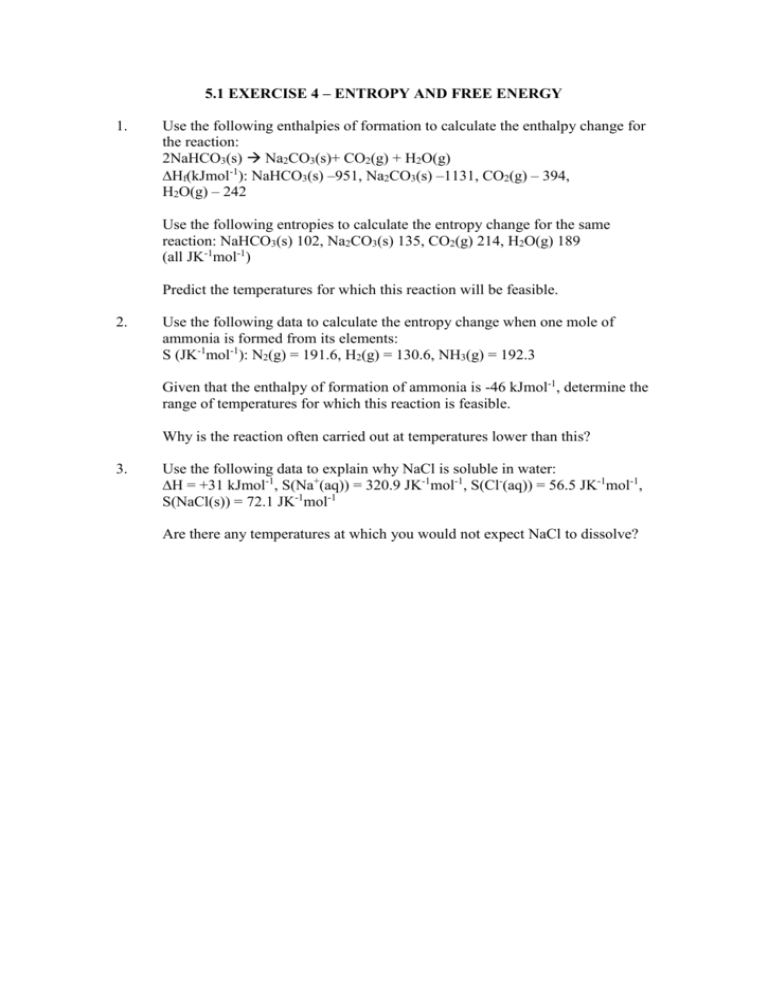
5.1 EXERCISE 4 – ENTROPY AND FREE ENERGY 1. Use the following enthalpies of formation to calculate the enthalpy change for the reaction: 2NaHCO3(s) Na2CO3(s)+ CO2(g) + H2O(g) Hf(kJmol-1): NaHCO3(s) –951, Na2CO3(s) –1131, CO2(g) – 394, H2O(g) – 242 Use the following entropies to calculate the entropy change for the same reaction: NaHCO3(s) 102, Na2CO3(s) 135, CO2(g) 214, H2O(g) 189 (all JK-1mol-1) Predict the temperatures for which this reaction will be feasible. 2. Use the following data to calculate the entropy change when one mole of ammonia is formed from its elements: S (JK-1mol-1): N2(g) = 191.6, H2(g) = 130.6, NH3(g) = 192.3 Given that the enthalpy of formation of ammonia is -46 kJmol-1, determine the range of temperatures for which this reaction is feasible. Why is the reaction often carried out at temperatures lower than this? 3. Use the following data to explain why NaCl is soluble in water: ∆H = +31 kJmol-1, S(Na+(aq)) = 320.9 JK-1mol-1, S(Cl-(aq)) = 56.5 JK-1mol-1, S(NaCl(s)) = 72.1 JK-1mol-1 Are there any temperatures at which you would not expect NaCl to dissolve?


